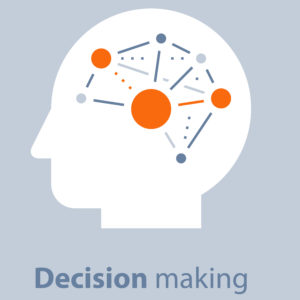How our brains process information is intimately tied to the kinds of goals we have or the tasks we need to perform. For example, when showed the word “yellow,” our brains process it differently depending on whether we are asked to read the word or report the color of the ink. Not only that, each of us processes information differently, making understanding the brain basis of these kinds of complex cognitive processes particularly challenging for scientists.
ShiNung Ching, assistant professor in the Preston M. Green Department of Electrical & Systems Science in the School of Engineering & Applied Science, and Todd Braver, professor of psychological & brain sciences in Arts & Sciences, both at Washington University in St. Louis, will create new models of brain function to tease apart those individual differences and create new models for them with a three-year, $610,560 grant from the National Science Foundation (NSF).

Matthew Singh, a neuroscience graduate student, is another member of the research team.
The grant is one of 18 awarded by the NSF to conduct innovative research on neural and cognitive systems and will contribute to the NSF’s commitment to the National Institutes of Health’s Brain Research through Advancing Innovative Neurotechnologies (BRAIN) Initiative.
“The teams will integrate multiple disciplines to look at fundamental questions about the brain in new ways,” said Shubhra Gangopadhyay, NSF program director in the Engineering Directorate. “The research will tackle problems that were previously intractable for neuroscience and cognitive science and will open up new avenues for future research. We are excited to see where these high-risk, high-reward proposals take us as a field.”
The research seeks to understand the mechanisms of cognitive control, or how the brain functions to allow us to vary our information processing and behavior based on our current goals and the situational context, such as not eating a friend’s lunch despite being hungry.
Ching and Braver will study two sets of data to determine these mechanisms. One set is the functional MRI (fMRI) data from the Human Connectome Project (HCP), a five-year, National Institutes of Health-sponsored study led by Washington University School of Medicine in St. Louis, aimed at constructing a complete map of structural and functional neural connections in the brains of a large, representative sample of individuals and their relatives.
Unlike traditional MRI, which takes anatomical images of the brain, fMRI measures brain activity by analyzing the neurons’ demand for oxygen in the blood — the more activity, the more oxygen is needed. The initial stage of model building, which Singh has carried out, has used the HCP data to develop and evaluate the accuracy of the models in recreating the time course of brain activity patterns, sometimes called dynamics.
Next, the researchers will deploy the models to understand brain dynamics in a second set of fMRI data that had individuals engage in a wide range of tasks that specifically depended on cognitive control. In the example of viewing words printed in different colors of ink, it requires more cognitive control when the task is to name the ink color and ignore the word itself.
When presented with this task — called the Stroop task — researchers have previously found that when the ink color and word are different, it takes longer for the person to process the information, and therefore requires more brain activity. Yet exactly how and why individuals also differ in their brain activity dynamics is still a puzzle.
“We would like to be able to build up a specific mathematical model for each individual’s brain activity so that we can begin to understand how the brain mechanisms of cognitive control differ between people,” Ching said. “Instead of taking 100 people and doing an aggregation and providing one characterization on average, we are going to take all 100 people and produce a different model for each of them so that we can understand the variability of their brain dynamics.”
Once they have the model, they will use it as a test bed to see what might be behind the overt observations.
“As people go about doing these tasks, the model will tell us what’s different about their brain dynamics as reflected through this neuroimaging data,” Ching said.
“If successful, this could be a real game-changer in putting forward new computationally based approaches to identify individual differences in the brain mechanisms that support higher cognition,” Braver said. “Such approaches are definitely not being standardly used in brain imaging research, and as such current research is somewhat limited in being able to investigate individual differences in brain function.”
To further look at the individual response to these tasks, Ching and Braver also plan to study sets of identical twins.
“Our modeling will allow us to disassociate this variability in terms of brain mechanisms and determine if differences are genetically encoded,” Ching said.
Building models such as these has been challenging for scientists because of the number of brain regions being recorded, Ching said.
“We’re trying to directly use the brain data to build the model,” he said. “Computationally, that’s quite a challenging problem. We have introduced a number of innovations in terms of how we formulate the model and are leveraging a lot of new engineering theories and methods that have come online over the past few years to overcome it.”
The scale of modeling and analysis they are proposing has rarely been attempted in neuroscience, the researchers said.
“Our hope is that these quantitative measures will help to explain how the individuals differ in their behavior and provide new predictive tools that can be used more broadly in the study of individual differences in human cognitive function,” Braver said.
“Moreover, by more comprehensively characterizing brain function during cognition in this way, we will be in a position to understand the ‘neural signatures’ that define different cognitive and psychological states. In the long run, this could help with diagnosis of cognitive impairments, and in developing new intervention techniques that can help enhance cognition.”
